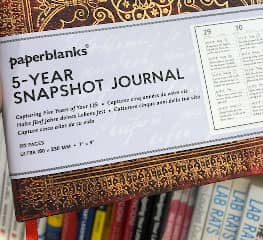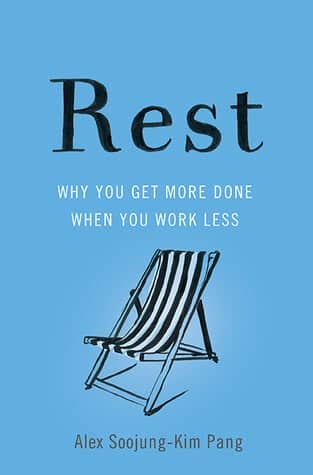Podcast: Download
Subscribe: Apple Podcasts | RSS
 Even if it feels like trying to capture the entire cosmos in a jar, it’s actually pretty easy to improve short term memory.
Even if it feels like trying to capture the entire cosmos in a jar, it’s actually pretty easy to improve short term memory.
Would you like that?
If so, I’ll show you exactly what it takes to improve every level of your memory on this page. Just read every word for the facts and some simple memory exercises that will help you improve your overall memory quickly.
But first, we need to establish the nature of this unique memory problem.
What exactly does a problem with short-term memory look like?
A Shocking Portrait Of Short-Term Memory Loss
Imagine the following scenario, inspired by the true-to-life novel about early onset dementia, Still Alice:
You’re in the kitchen, preheating the oven to make a batch of your world-famous brownies. You’ve assembled your ingredients on the counter to prepare your batter… and then the unthinkable happens. You only have one egg left in the carton and the recipe calls for two.
At least… that’s how you remember it.
Frustrated, you grab your keys and head to the store. You remember you’re low on paper towels and need batteries for the TV remote, so you put those in your cart as you navigate the aisles. (Perfect opportunity to create a Memory Palace, isn’t it?)
You pay for your items, load up the car, and drive home. You walk back into the kitchen and feel happy when you see that the oven’s temperature ready for your brownies. And then you realize you forgot the eggs you went to the store for in the first place!
It happens to the best of us. Our short-term memory can be seriously lacking at times. Stress, depression, lifestyle habits like sleep, diet, and exercise, even medications, can cause short-term memory difficulties.
So what do we do? Do we resign ourselves to list-making and app dependency to remember daily bits of information? Are we glued to the smartphone or pen and paper as our lifeline against forgetfulness?
Hardly. As many memory experts like Lynne Kelly and others I talk about in this video have demonstrated, you can memorize incredible amounts of information within seconds:
So please don’t lose hope. There is a better way.
And that’s why I’ve assembled the step-by-step guide on this page. I want to help you improve your short-term memory so your next learning (or baking) session goes off without a hitch.
Keep reading to discover an actual means of improving short-term memory and examples of short-term memory at work.
A Brief Definition Of Short Term Memory
While we could dive straight into the techniques of improving memory so as to not risk getting bogged down by terminology, it’s important to first define what short-term memory actually is.
We must first note that there is a difference between short, long term, and working memory. And it’s important to note the different memory problems that emerge from each.
While long term and working memory are more complex, short-term memory is simpler, with a two-fold function.
Short term memory is:
- An ability to understand sentences, spoken and written. It is, at its most basic, tied closely to comprehension.
- The ability to remember small sequences of numbers, such as telephone numbers.
Short-term memory is the type of memory that helps you understand what you are reading.
Without it, you‘d be constantly confused when studying, saying “What did I just read?”
It is also the type of memory that when you see an infomercial on television lets you remember the telephone number to call and order your Flex-Seal or airbrush makeup kit for only three easy payments of $19.95.
The Zen of Improving Short Term Memory
Because memory is so central to our overall brain function, to improve it, we must improve all of our types of memory.
This means tapping into:
- Episodic memory
- Figural memory
- Procedural memory
- Semantic memory
- Spatial memory and even autobiographical memory. Like this:
The name of the game is comprehensive improvement. Isn’t that what we really desire anyway?
If not, we should.
Why?
Because when we focus on a complete enhancement of all aspects of our memory we will do more than improve our short-term function. We will also transcend the textbook definitions of memory.
And it feels like “Zen” because, once you’re into the rhythm of working on your memory, you’ll wonder why you never did it before. It’s so much fun!
How Anyone Can Hold Far More Than 5-8 Digits In Memory With Ease
We need to look no further than memory competitors who blur the lines of what short-term memory is defined as. The textbook definition suggests one can only keep five to eight digits in memory at once.
Yet, using a simple number system, World Memory Champions like Alex Mullen can memorize a deck of cards in seconds. Although he doesn’t use the Dominic System, I imagine Alex learned a lot from that approach, as can we all.

Now, you might be looking at the photo above and thinking… Alex is so young!
You’re right, but check out Lynne Kelly who wrote The Memory Code. She’s one of many mature members of our society who do very well in memory competition.

Plus, please understand this important point:
This practice is not just about playing cards and numbers.
When I‘ve given memory demonstrations, I have memorized 20 to 30 names in only the amount of time it took to hear them.
Thus, the boundaries of what short-term memory is called in textbooks is not so strict, so rigid or so limited.
Now that you know that these memory feats come from specific kinds of brain training, it‘s worth repeating this simple fact:
You need a holistic, comprehensive memory training program, ideally one that leads to long-term memory benefits that offer you predictable recall.
How Comprehensive Memory Training Helps (Quickly)
In order to give you long term, predictable recall, the first step is to exercise your spatial memory.
This is where the Magnetic Memory Method and using a robust Memory Palace Network comes into play:
Next, we have elaborative encoding, which I call Magnetic Imagery (sometimes called mnemonic imagery). This mnemonic skill must be sharpened.
How do we become great at creating associations so we can remember more?
There’s no shortcut or quick-fix here. Daily, creative repetition is the key to building a strong foundation on which to build your short-term memory comprehensively.
If you take the time to create your Memory Palaces, then encode them with real and relevant information that is important to your life, you will be far ahead of the game.
Next, practice decoding, or Recall Rehearsal. Used inside a Memory Palace for a meaningful learning project, your short-term memory will be sharpened, improved and ready for use at the drop of a hat.
Step One:
Eliminate The Digital Brain Games
Can apps help improve your memory?
The short answer:
It‘s unlikely.
The longer answer:
Relegating your memory improvement to a device is only marginally beneficial. One of the former leading memory improvement software companies, Cogmed, promised big results with completion of problem-solving and training tasks.
Although some improvement occurred, there was no evidence these results were lasting. In this digital age there is still the need for real, human interaction. In other words, personal, one-on-one training, not artificial intelligence or a simulation, for real, durable results.
This is true for language learning as well. Sure, you may find that you can remember a list of vocabulary or read fluently in a second language with learning software, but true results and comprehensive fluency include conversation. This cannot be accomplished with software alone.
The general rule is to get off apps, not more into them. We are almost glued to our smartphones, immersed in virtual reality, out of touch with the real world. Why add one more notification or thing to be tended to for the computer in our pocket?
Turn off the TV and write a story. Don’t see yourself as an author? …Just try. Put pen to paper and don’t be afraid to suck.
By simply writing a short narrative, you will manage character names, locations and other details in your short-term memory. It’s very powerful.
Step Two:
Keep A Snapshot Journal
Do you remember the rant from Foo Fighters frontman Dave Grohl?
“Musicians should go to a yard sale and buy an old … drum set and get in their garage and… just suck. And get their friends to come in and they’ll suck, too. And then they’ll …. start playing and they’ll have the best times they’ve ever had in their lives and then all of a sudden they’ll become Nirvana.”
Great advice, but get this:
You don’t have to be a virtuoso to be a musician and benefit from mnemonics for music.
Likewise, you don’t have to be an author to write. When it comes to memory, all you have to do is record the things you enjoy about your life.

I’ve recently taken up using a Snapshot Journal, which lets you compare five years in the same diary on a single page.
Since writing is known to improve memory and I love the simple passive memory exercise of remembering a few things from the day before, I snapped one up and have used it daily ever since. It makes a difference.
As a tip, keep your Snapshot Journal open and in a high traffic part of your home. I keep mine by my desk and use it to list movies I‘ve seen, the livestreams I‘ve held and my accuracy with memorizing cards.
Flip back through the pages regularly and see if you can think of things to add.
Again, this is comprehensive memory training. It might not see to relate to short term memory, but by focusing in the present moment deep into your past memory, you are practicing the practice of linking focus and concentration together.
Like writing a bit of fiction, writing about your own life is one of the best and fastest ways to start remembering more in the short term. It improves this aspect of your memory for a simple reason:
Because it’s using it.
Step Three:
Read Daily From Print For Better Memory
Speaking of writing, reading is a great memory exercise.

You retain your focus to comprehend what you’re reading. If you lose the details of what you just read, or you’re constantly having to go back and reread a few paragraphs, don’t fret or turn it into a problem. Simply read again with more purpose and intention. Over time, you can improve your short-term memory by focusing in this way.
And when you find your mind wandering, go with it! Instead of beating yourself up about it, go for a walk and pay attention to the world, untethered from all devices. Simply notice the world and the details of nature.
This suggestion is just one of the many Alex Pang makes in Rest: Why You Get More Done When You Work Less.
If you don‘t like to think of walking as a positive mind wandering generator, incorporate Recall Rehearsal into the journey. Take advantage of being unplugged to journey through your Memory Palaces as you walk.
Understand that real short-term memory is focused attention and meditation plus mindfulness and memory is true short term memory power.
And to get that focus going, you need to read on an old fashioned device that won’t interrupt you. It’s called a physical book.
If you don’t believe that reading on your phone or from Kindle is ruining your memory, read the facts from this piece on Digital Amnesia.
Step Four:
The Ultimate Memory Exercise for Short-Term Memory “Stretching”
It’s easy and fun:
Get in the habit of memorizing names.
Not just the names of the people you meet. Also:
- Authors
- Musicians
- Actors
- Politicians
- Doctors
Memorizing names is hugely powerful for three reasons.
1. You start consciously paying more attention to names.
This will improve your social skills and create a better first impression on others. (I’d say that’s a pretty great side effect.)
2. Everything you memorize is a name. Every foreign language word or number is effectively a name for an object or concept. If you can memorize names, you can memorize anything.
3. The rapid encoding of names is useful in translating your short-term efforts into long-term results. If you need some exercises, this short list will help you get the elaborative encoding you need right.
4. You can use the Memory Palace, sometimes called the Loci Method.
Why You Should Memorize Names In Private First
Start this as a private exercise before you attempt this rapid encoding and recall in public.
Go to Wikipedia and press the “random” button until you have a list of 10 names assembled. Or scroll through IMDB and review cast and crew lists of movies.
Or work with the names you already have in your memory. Try to recall lists of past Presidents, or famous composers or poets. The sky’s the limit, so get creative.
Once you’re feeling confident in your work in private, go semi-public. When you see workers with name-tags at the store, or office workers’ desk plaques, make a note of these names in your memory journal and test yourself.
Approached this way, you’re not stressing yourself out. There’s no stakes and you can always win.
When you quiz yourself and you remember a name, give yourself a pat on the back (or post on our memory improvement forum so our community can).
Or, if you’re having trouble with name recall and make a mistake, just treat it for what it really is: An opportunity for improvement. Seeing opportunity is what makes any perceived failure a win.
As you build this skill you’ll be able to eventually take this along as a fun little party trick (that’s also beneficial to your memory).

As you meet people, commit their names to memory, then when goodbyes are being said you can announce:
“I memorized everybody’s name here. Would you like to see a fun demonstration?” then recall all the partygoers to everyone’s amazement.
Don’t limit yourself to just names though. You can use this same rapid encoding practice with memorizing prices at the store, playing cards, and, of course, your 00-99 configuration. Take the same principles of recall and use them across the board, as they are truly universal.
Step Five:
The Best and Most Practical Way to Practice Improving STM
Without question, the best and most practical way to improve short-term memory is memorizing names in real time, in public. There are endless opportunities for you to give yourself this kind of short term memory loss treatment:
- Meetup.com (joining Meetup groups with like-minded people who share your interests in memory)
- First day of school (memorize your classmates names)
- Film credits in movies (test as soon as you get home with your date)
- Discussions (memorize your “opponent’s” points during arguments so you can refer back to what they said and how they said it.)
As you engage in this exercise in real time you’re not only improving your memory, but human connection as well. You’re honoring the person you’re speaking with by truly paying attention, instead of having a distracted interaction.
Step Six:
Extended Exercises for Long-Term Memory Stretching
Translate this focused attention to the long term by shifting your focus. Instead of small pieces of information, like names, think of large projects that need your attention.
Try learning a foreign language. Use mnemonics to help you memorize both vocabulary and phrases.
Or learn to memorize scripture, poetry, quotes, speeches, and song lyrics.
Try “mixing and matching” this information for even greater benefits.
For example, your goal may be to become fluent in Spanish. Along with your learning of Spanish vocabulary you may memorize works from Spanish poets like Pablo Medina or Martin Espada. When you’re feeling burnout with memorizing poetry, work with your vocabulary and vice versa.
You can also learn to memorize numbers, and go on to number your Memory Palace Network. Anytime you want to increase the challenge, you can.
Step 7: Fix Your Lifestyle
Finally, check out these general memory tips that will help you with both your short and long-term memory.
We often overlook the obvious when it comes to memory wellness, which is tending to our overall wellbeing. I cannot underestimate the benefits of physical health to brain health. There have been numerous studies linking mind and body wellness, and therefore, when exercising our memory, we must remember to care for our bodies as well.
Sleep
This means getting an adequate amount of sleep. Try sleeping without electronic devices in your bedroom and hold yourself to a “computer curfew.” You may be surprised at how much more restful your sleep truly is.
Diet
Evaluate your diet. Eat memory friendly foods and avoid those that destroy memory. If we’re truly honest with ourselves none of us eat as healthily as we should.

Our busy lives often lend themselves to convenience foods or fast foods, rather than true, whole foods that are nourishing to our bodies (and therefore our minds).
Socialize
Also, socialize. Take opportunities to be with other people and often.
Speak with them.
Pay attention to them and what they’re saying, not only for the short-term memory benefits we discussed, but for yourself. If you’re truly engaged with others, that investment feels good. We crave that interaction as social creatures, so make it count.
Meditate
Meditation is not only a proven way to improve your memory. It sharpens your concentration too.
When I meditate, I recite a lot of material, as well as focus on breathing and a few other exercises.
It is powerful because of the self-observation skills it creates. When you’re in the world, engaging with people and information overwhelm, that extra bit of awareness gives you an edge and you capture more information.
If you’re not a meditator yet, I suggest you give it a try a.s.a.p. and give it at least 4x a week over 3 months before you assess the results.
Conclusion:
“Forget” Short-Term Memory
I hope you’ve enjoyed these short term memory strategies for adults. Most of them will work for kids too, and all without any risky supplements.
In sum, if you want to improve short-term memory, you need to practice multiple levels of memory.
The best way to do that is to use comprehensive memory techniques daily. The Memory Palace technique is especially great because it helps you combine all the levels of memory in a streamlined manner. You might even start to experience something like flashbulb memory.
Remember not to get too hung up on the terminology of memory training. Learn it as you go.
Finding the balance between encoding and decoding makes it all simple.
And who knows, maybe your next batch of brownies won’t call for two trips to the corner market. If you want to remember when you take that next trip, please sign up for this free course:
It will help you improve all aspects of your memory quickly through video lessons, worksheets and training you cannot get anywhere else.
Related Posts
- 5 Memory Palace Examples To Improve Your Memory Training Practice
Here are 5 Memory Palace examples that will improve your memory training practice quickly, even…
- How to Increase IQ: 7 Actionable Activities
It's possible to increase your IQ. The best part is that it's easy to do…
- 3 Blazing Fast Ways To Increase Memory Retention
Memory retention... what the heck is it? Is it worth worrying about? If so, can…








2 Responses
I over-socialize, and need more time to read all the material, videos, books, and practice. Sometimes I do not sleep well enough to be doing that, but I recuperate later during the day. I will find places to do exercises mentally and physically. I appreciate your tips. People around me do not care about studying as I do.
Thanks as always for your comments, Maricela.
Since you over-socialize and the people you are around don’t appreciate studying, perhaps you can either:
1) Stop spending time with them
2) Find people to socialize with who do care about studying
Hope this helps!